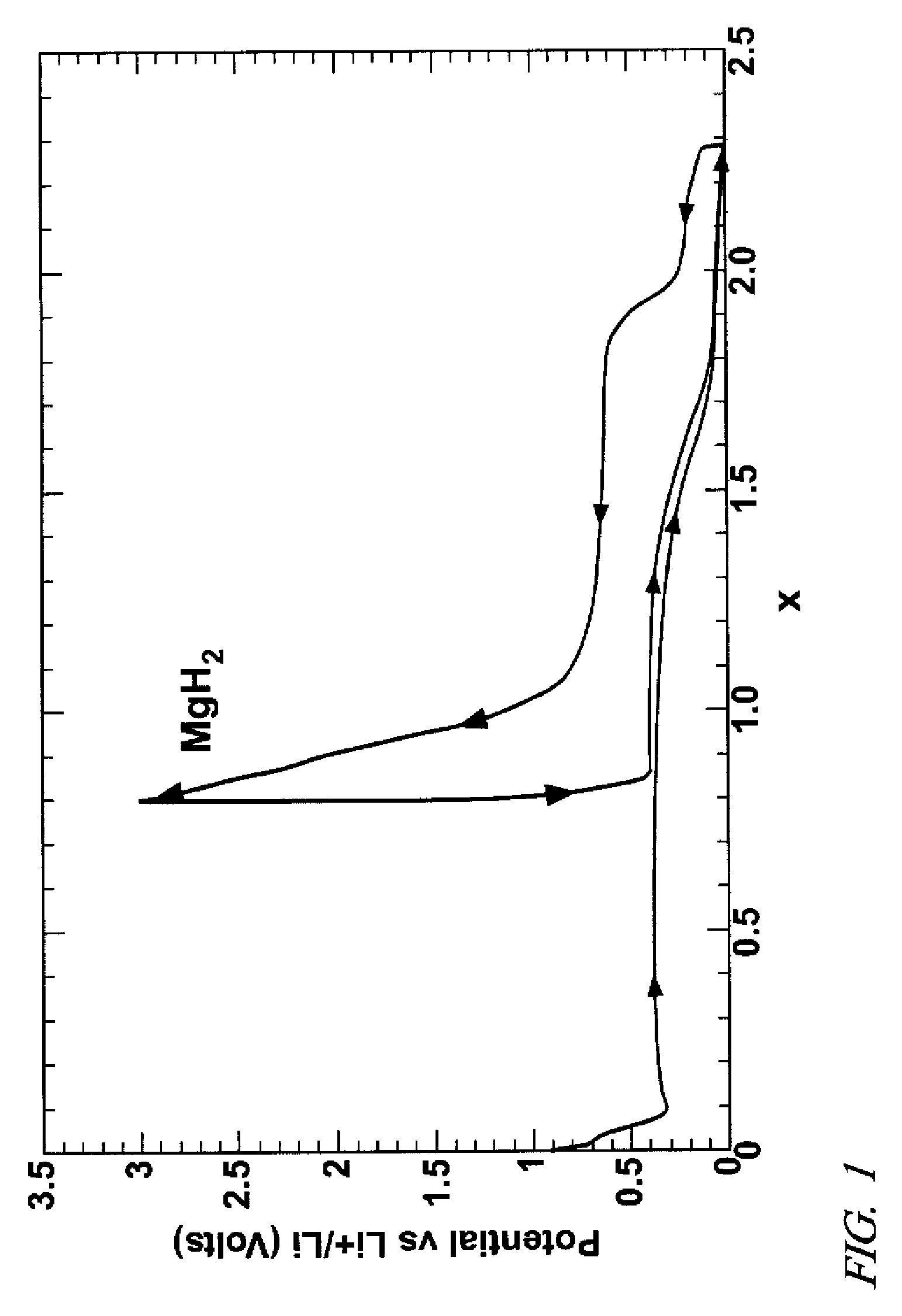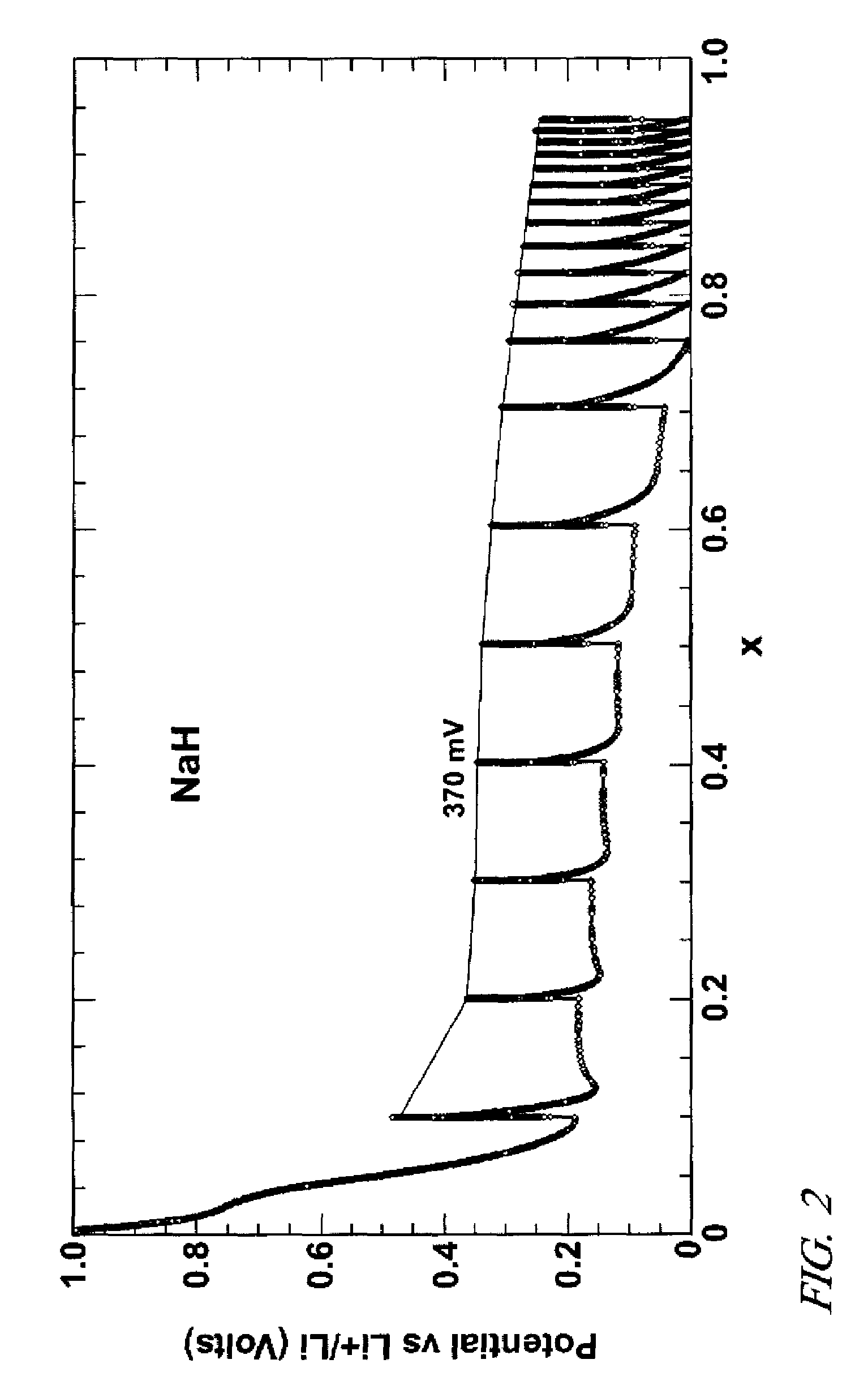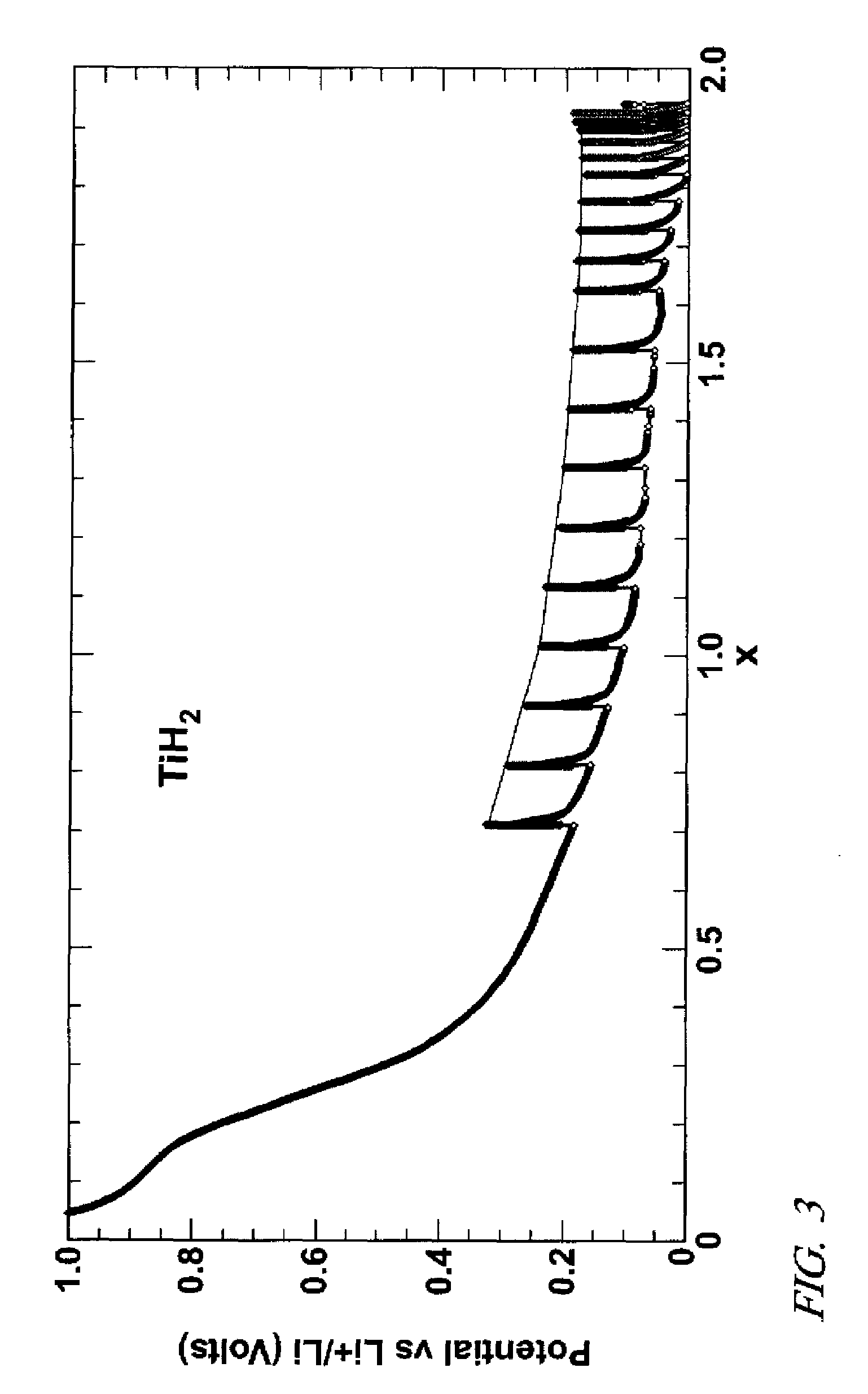Lithium hydride negative electrode for rechargeable lithium batteries
a lithium battery and negative electrode technology, applied in the direction of negative electrodes, electrochemical generators, cell components, etc., can solve the problems of difficult cell operation, carbon electrode capacity is appreciably less than that of lithium metal,
- Summary
- Abstract
- Description
- Claims
- Application Information
AI Technical Summary
Benefits of technology
Problems solved by technology
Method used
Image
Examples
example 1
[0024]Particles of magnesium dihydride (MgH2) were ball milled and mixed with particles of electrically conductive carbon (e.g. Vulcan carbon, a high surface area carbon black) as a negative electrode precursor material. The powder was further mixed with a solution of PVDF polymer in dibutyl phthalate to disperse the polymer on the carbon / metal hydride particles and obtain an ink-like mixture. The ink-like material was coated on the surfaces of a nickel foil and dried to remove the solvent.
[0025]The precursor material-coated nickel foil was used as a cathode with a lithium foil anode in an electrochemical cell for insertion of lithium into the intimate carbon-magnesium hydride precursor mixture. The electrodes were pressed in contact with a porous polymeric separator material soaked with a liquid electrolyte comprising lithium hexafluorophosphate salt dissolved in a mixture of ethylene carbonate and dimethyl carbonate. A direct electrical current was applied to the lithium foil anod...
examples 2-5
[0031]Negative electrode precursor materials were also prepared with sodium hydride (NaH), titanium hydride (TiH2), lanthanum-nickel hydride (LaNi5H5), and magnesium-nickel hydride (Mg2NiH4). As in Example 1 amounts of each of these second metal hydrides were, respectively, mixed with Vulcan conductive carbon and binder and applied as inks to form lithium hydride precursor compositions on nickel foil electrode supports. Electrochemical cells with lithium foil and lithium salt electrolyte were prepared as described above with respect to magnesium hydride precursor material.
[0032]In each example a constant dc current was passed through the cell to infuse lithium metal from the lithium foil into the precursor electrode material. The graphs of FIGS. 2-5 record the voltages as lithium was infused into the respective electrodes and reacted with the precursor material to form lithium hydride and nanometer-scale particles of a second metal.
[0033]FIG. 2 presents the voltage data for NaH prec...
PUM
 Login to View More
Login to View More Abstract
Description
Claims
Application Information
 Login to View More
Login to View More - R&D
- Intellectual Property
- Life Sciences
- Materials
- Tech Scout
- Unparalleled Data Quality
- Higher Quality Content
- 60% Fewer Hallucinations
Browse by: Latest US Patents, China's latest patents, Technical Efficacy Thesaurus, Application Domain, Technology Topic, Popular Technical Reports.
© 2025 PatSnap. All rights reserved.Legal|Privacy policy|Modern Slavery Act Transparency Statement|Sitemap|About US| Contact US: help@patsnap.com



